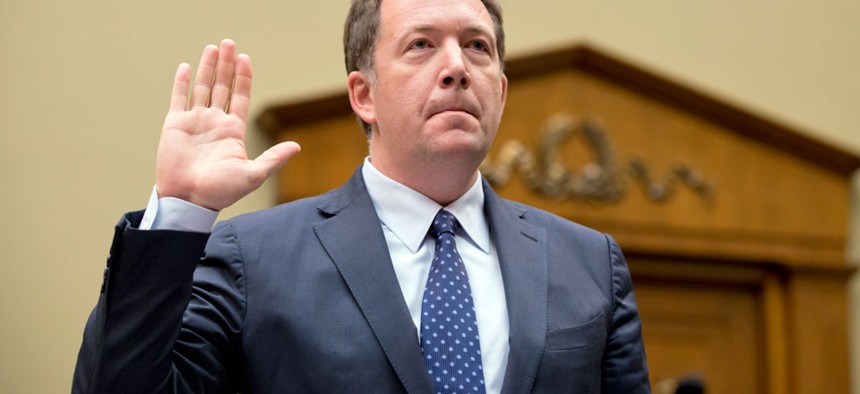A Wish List for the New Federal CIO

Steve VanRoekel, former U.S. chief information officer J. Scott Applewhite/AP
Agency IT officials and tech implementers are sharing some items they think should be at the top of the as-yet-unknown federal CIO’s to-do list.
It’s been more than four months since federal Chief Information Officer Steven VanRoekel walked off the job and into a new role using technology to fight the Ebola outbreak in West Africa.
It’s still anybody’s guess whom the administration will name to fill VanRoekel’s shoes. Regardless, agency officials and tech implementers are sharing some items they think should be at the top of the yet-unknown federal CIO’s to-do list.
For one thing, agencies are expecting action.
"I think there's going to be much more implementation," said Maria Roat, chief technology officer at the Transportation Department and the former head of the office responsible for vetting the security of prospective cloud computing services.
Cloud computing has figured greatly into the agendas of previous CIO -- think the "cloud first" policy drafted and championed by former CIO Vivek Kundra in the early years of the Obama administration.
More recently, however, the big push for cloud migrations appears to have weakened. The Government Accountability Office in a September 2014 report found agencies across government had failed to consider cloud computing services for nearly three-quarters of their existing IT investments.
Roat, who previously served as the director of the Federal Risk and Authorization Management Program office, told Nextgov she hopes the new federal CIO continues to play a role in helping agencies think about "how they can implement and use the cloud smarter."
For Roat, that means more of a focus on the so-called hybrid cloud, which describes a mix of both commercial cloud services and in-house data centers instead of an all-or-nothing cloud shift.
Nextgov caught up with Roat at the Cloud Computing Summit in Washington, D.C., this week.
More broadly, Roat said she hopes the new CIO is vocal about sharing lessons learned.
“If somebody did a good job doing something, building something, deploying something -- share that with other agencies,” she said. “I really think there needs to be more of that, because there's a lot of agencies that are doing really good things, but you don't find out about it until too late."
Dan McCrae, the chief architect of the National Oceanic and Atmospheric Administration's cloud effort and director of NOAA’s Service Delivery Division said he hopes the new federal CIO is able to build bridges between the tech workforce -- traditionally, the purview of the CIO’s office -- and the federal acquisition community and human-resources shops.
“Those are two types of people who generally don't show up to the table when we're talking about” technology issues in government, he said during a panel discussion at the cloud summit. “And it hinges upon making sure you've got the right people doing the right thing.”
Focusing some attention on the human element could be helpful in fueling support for wider adoption of cloud computing among agency rank-and-file, he said.
"People are much more inclined to stop hugging servers if you can tell them they'll still have a job after that goes out the door," McCrae said -- explaining the trepidation many in-house agency IT staff still have about moving data and applications from in-house data centers to the cloud.
He cited a project he worked on a few years ago involving migrating public websites to the cloud. The business case attached to that project estimated 65 percent of the savings from that shift would stem from the elimination of federal labor.
"If you want to see a bunch of CIOs back away from the table, then you start talking about that," he said.
Meanwhile, Sean Herron, a project lead and developer at 18F, the General Services Administration-based startup that helps agencies build new digital services, suggested the CIO could be a cheerleader for 18F's open-source development efforts.
"A big part of what 18F is trying to do is to open source every single line of code we write, he said. “And so every single thing that we create from an entire website for an entire agency to little, tiny code packages, we're putting online for anyone in the world to use free of charge. But ultimately, that strategy won't be successful to us at all unless people start using that code.”
18F could use help from the new CIO with publicizing the effort across government, said Herron, who also spoke at the cloud summit.
"Wouldn't it be great if everyone in this room was actually taking all the code they wrote and after a pertinent review -- and of course, making sure there were no vulnerabilities or private information there -- making it available to everyone else?" Herron asked. "How much money and how much time could we all save if we could actually take advantage of the innovations that everyone here came up with?"





